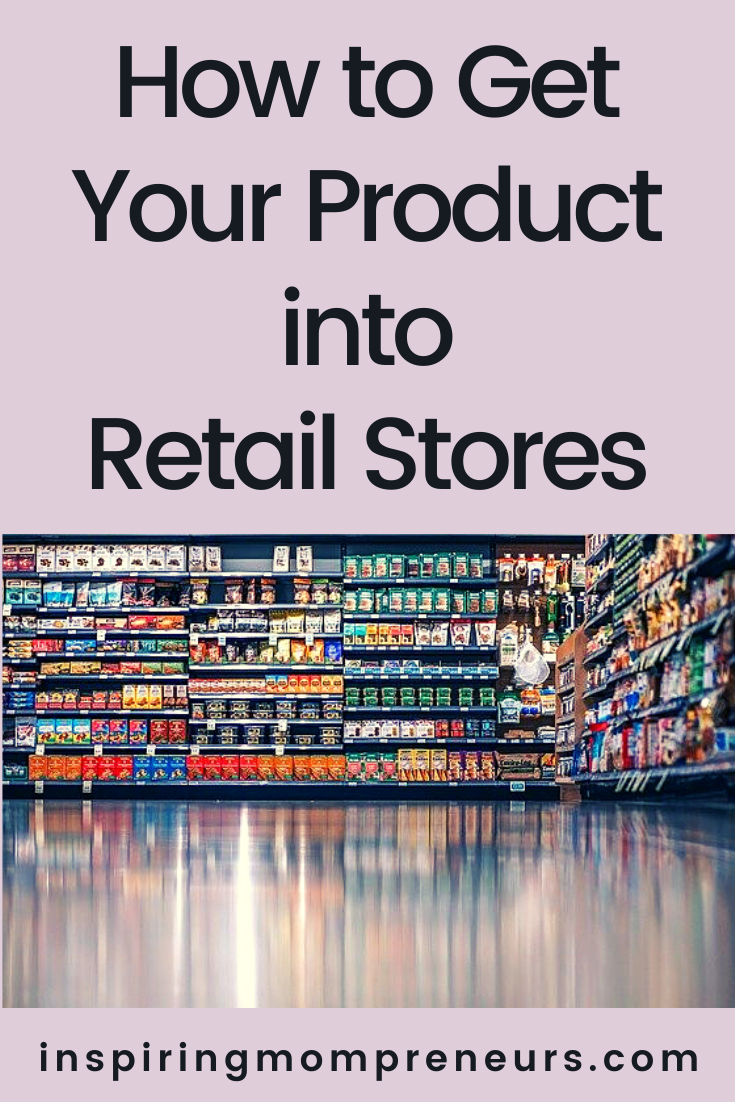How to Get Your Product into Retail Stores
Is your dream to walk into a famous national or international store, and see the product you loving developed, created, and promoted staring right back at you from a prime shelf position?
Well, you are not alone, indeed, many online retailers dream of one day seeing their products grace the shelves of big brand stores.
In fact, the lure of bulk orders, and accessing a wide audience, such a position can seem quite hypnotic.
However, the journey from an independent online seller to one that is sold locally, regionally, and even internationally can be a tricky one.
The good news is that there are some tactics you can use to maximize your chances of success. Keep reading to find out what they are.
Make sure your product does what it promises
First of all, if you want any chance of getting your product stocked on the shelves of big-name stores, you need to make sure that it is the most perfect version.
What this means is that there are many things you can do to increase your chances of being accepted by big retail stores, but if your product isn’t strong it will all be in vain.
Of course, that means plenty of product research and development, and above all making sure that you listen to the comments and improvements that your target demographic has for you.
Indeed, there is no excuse not to hear and act on these anymore. Elements like social media and independent review sites provide the perfect platform for customer feedback which should be used to make your product the very best version of itself that it can be.
 Define your products USP’s
Define your products USP’s
Once you have a robust product that you know your target demographic loves, it’s time to nail down its unique selling points. That is, what makes it different, in particular from the other products that big brand stores stock.
Retail buyers are hesitant about stocking products that are very similar to other products they already have on their shelves.
Remember that your USPs can be anything that makes your products stand out from the crowd. This could be the materials you use to produce your product or even the way those materials are collected (eg. in a sustainable way) or a particular feature or benefit that no other product on the market offers.
Your brand’s story and values are also important here especially if you can demonstrate that they match up with the way that you are operating as a business.
So, do not underestimate the power of social and ecologically sound practices right now for increasing numbers of people, as they are the first thing to be considered when buying a new product.
In particular, you will need to be very clear on what it is that sets your product apart from those it will share shelf space with.
With that in mind, you may wish to write an elevator pitch. This is a summary of your products USPs, the idea being that it could be relayed in the time it takes for an elevator to get from one floor to another. After all, you never know who you are going to meet or where.
Most elevator pitches are:
- short and sweet
- describe what problem the product solves
- major benefits of the product
- how this product stands out above the competition
- who would buy it (target customer)
You can find out more about elevator pitches here.
Invest in professional packaging
Once you know your USPs you can go ahead with the packaging part of getting your product retail store ready. Indeed, many people often overlook this step and push straight through to the pitch.
However, for any retailer buyer to take your product seriously, you must have professional packaging. And that’s not the only reason why your retail packaging needs to be as professional as possible – you can save yourself a lot of hassle and cost later on by sorting your packaging at the get-go.
You may have a great product but if a buyer is unsure whether it will make the journey to or from the store in one piece then they might have second thoughts about stocking it.
Additionally, once your product does find its way onto the shelves your packaging will need to stand out and compete with the other products around it.
Remember that there is a massive difference between being stocked in a store, and being in demand in that store, and the right packaging can help you bridge this gap.
Use trade shows
Another smart way of getting your products in front of the right people is to attend trade shows and invest in a stand. However, it is worth noting that there will be a significant cost involved in this. Indeed, the larger or the better the location of your stand, the more you can expect to pay. Although, good positioning and a substantial stand can help you grab the attention of the very people you are looking to impress.
The great thing about trade shows is that if you choose the correct ones you will be surrounded by buyers for the market you are looking to break into.
It is also possible to use the atmosphere of the event, which is often positively charged to whip up additional enthusiasm and support for your brand.
Find an ‘in’
Setting up a meeting with a retail buyer where you get to present your product is one way to get your foot in the door. However, it is certainly not the only way that you can get your products stocked in shops. In fact, a broader approach is likely to be much more successful.
This means targeting individual stores with samples. Indeed, for local stores and boutiques this is the best approach there is, although you will need to be armed with your elevator pitch each time.
Of course, for regional and national stores, getting to speak to the person in charge of buying may be a bit more tricky. However, do not forget that reaching out to them on their official social media, or even sending samples can be a way of getting your products noticed.
Don’t neglect your online presence
Finally, even if your ultimate goal for your business is to get into retail stores, you must maintain the hard work you are doing in the online space as well. In fact, never have the two spaces been so interconnected, with customers buying in stores, often because they have researched the product and brand online first.
Additionally, to get your product stocked by stores in the first place, having a strong online presence can be very helpful. After all, even the strictest of buyers will struggle not to be impressed with lots of support and positive feedback online.
Final thoughts
While there are many benefits to getting your product onto the shelves of big stores, it is not often a process that happens overnight. Instead, there will be considerable work to complete before you can achieve your goal, including making sure your product is perfected, and that you have a clear grasp of its USPs.
Additionally, be sure to invest in professional packaging, and if possible attend a trade show or event to connect with the right buyers.
Last of all, do not forget that even while your goal is to sell in bricks and mortar shops, a robust online presence remains important, both in terms of your standing with potential buyers, and generating sufficient demand for your product once you succeed and get your products on the shelf.


